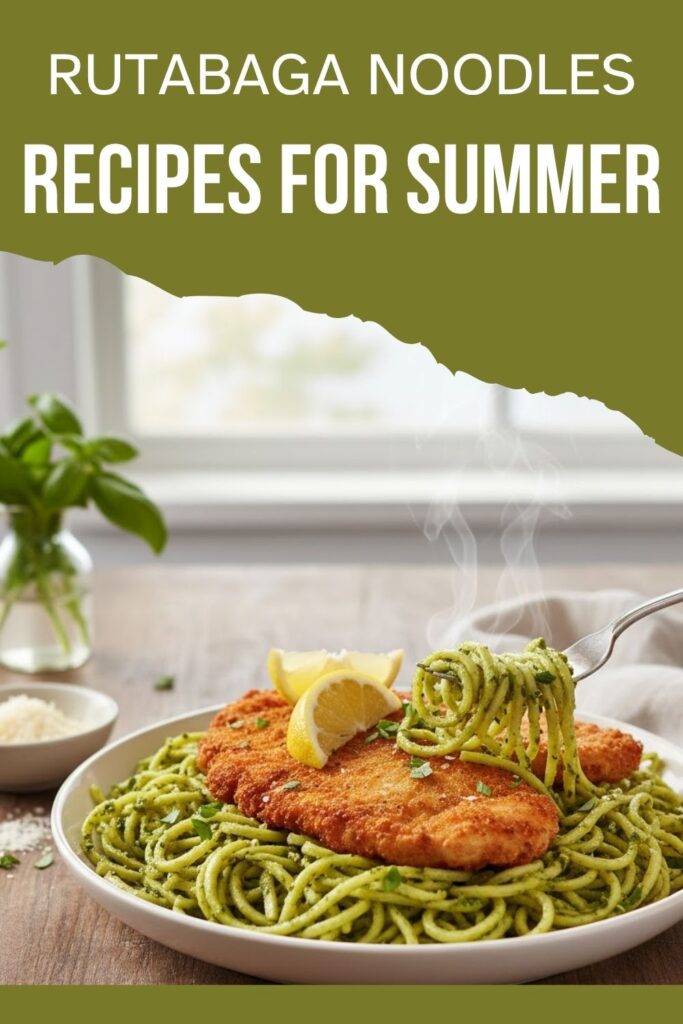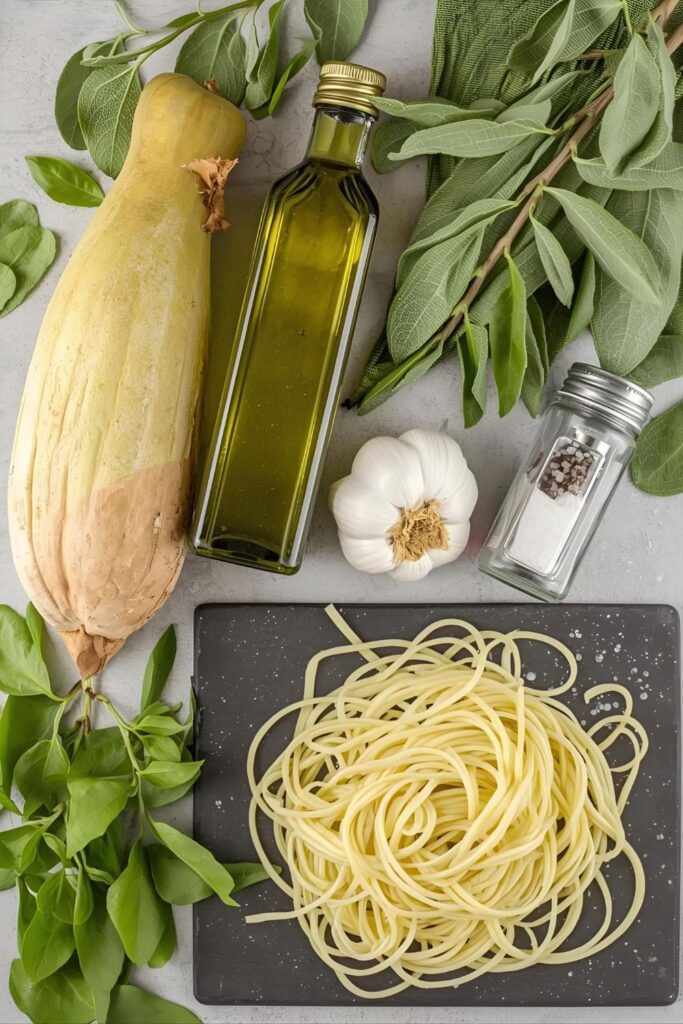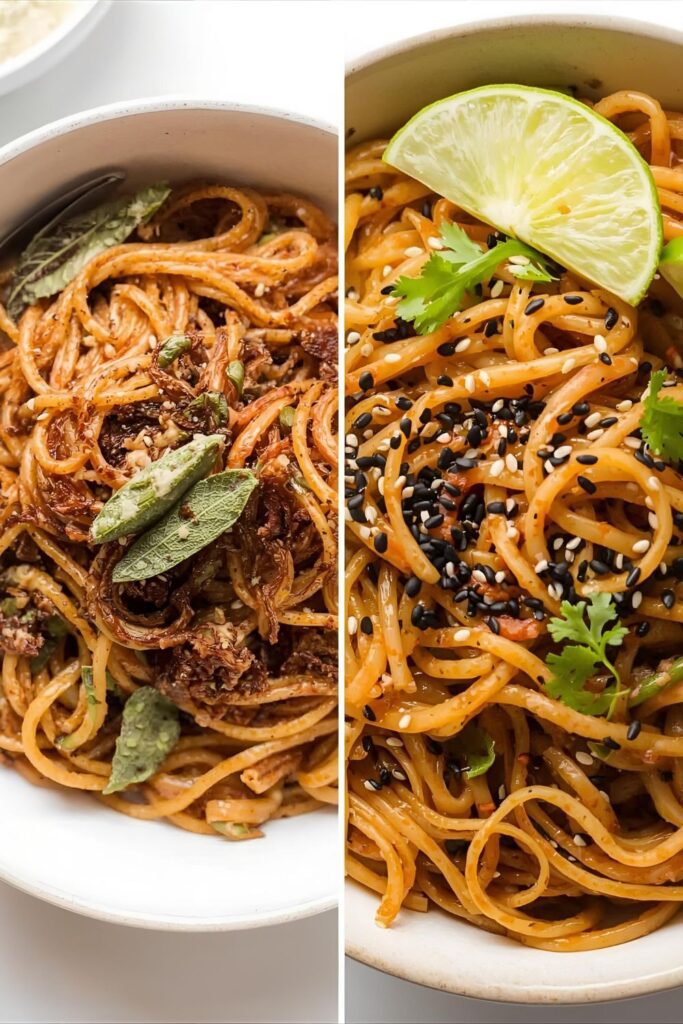Spiralize Your Life: The Ultimate Guide to Perfect Rutabaga Noodles (Seriously!)
Remember that time you tried to go low-carb and nearly cried into a sad, soggy bowl of zucchini spaghetti? Yeah, me too. We’ve all been there, staring down the barrel of a vegetable that just isn’t pasta. But listen up, because I found the golden ticket: Rutabaga noodles. That’s right, the humble rutabaga, the weird, often-forgotten root vegetable, is about to become your new favorite fake-noodle obsession.
This isn’t your grandma’s boiled-to-death side dish, I promise. We’re talking firm, slightly sweet, and surprisingly substantial strands that hold up to the heartiest sauces. You’ll be craving these instead of feeling like you have to eat them. Ready to ditch the zoodles and try something better? Of course, you are.
Why This Recipe Is Awesome (Spoiler: It’s Not Just Low-Carb)
Let’s be honest, half the joy of pasta is the chew. Zucchini fails that test miserably, ending up as a limp, watery mess that makes you question all your life choices. The rutabaga? It has texture, baby! It’s naturally firmer than most veggie noodles, giving you that satisfying bite that tricks your brain into thinking you’re eating the real thing.
It also boasts a subtle, earthy sweetness that works incredibly well with savory sauces like pesto or a rich brown butter sage. You want to impress your guests with a meal that looks fancy but requires practically zero effort? This is it. You want a weeknight dinner you can throw together in under 30 minutes? This is also it. It’s a win-win, IMO.
🥕 The Core Ingredients You Need
Don’t panic, we’re keeping this simple. You probably have most of this stuff in your pantry already. If you don’t, what are you even doing with your life? Just kidding… mostly.
- 1 large Rutabaga: Look for a firm one, free of soft spots. Peel it like you mean it; that outer layer is tough.
- 2 Tbsp. Olive Oil (or Ghee/Butter): This is for sautéing and adding flavor. Don’t skimp on the fat!
- 2 cloves Garlic, minced: Because everything is better with garlic. This is a non-negotiable food law.
- Salt and freshly ground Black Pepper: To taste. Start small, you can always add more.
- 1/4 cup Vegetable Broth (or Water): Just a splash to help steam and tenderize the noodles without turning them into soup.
- Your Favorite Sauce: Pesto, marinara, brown butter and sage—you choose your adventure!
Key Substitutions:
- No Rutabaga? Try celeriac (celery root) for a similar firm texture, but it has a stronger flavor.
- Vegan Swap: Use nutritional yeast instead of Parmesan for a cheesy flavor. Swap olive oil for butter/ghee.
🛠️ Tools & Kitchen Gadgets Used
This is where the magic (and the affiliate links) happens! You only need a few key pieces of equipment to turn a lumpy root into glorious noodles.
- Vegetable Peeler: Essential for tackling that thick rutabaga skin. Don’t underestimate the difficulty of this job.
- Spiralizer (Handheld or Countertop): The tool for making the noodles. A simple handheld one works, but a countertop spiralizer makes life so much easier (and produces less carpal tunnel).
- Sharp Chef’s Knife: For trimming the rutabaga and chopping the garlic.
- Large Skillet or Wok: You need room to toss those glorious noodles without making a mess everywhere.
- Cutting Board: A stable, non-slip one, because safety first!
👩🍳 Step-by-Step Instructions: Making the Magic Happen
Seriously, this is so easy you’ll wonder why you haven’t done it sooner. Time to get cooking!
Step 1: Prep the Rutabaga for Noodling
Peel the rutabaga ruthlessly. It has a tough exterior, so put some muscle into it. Slice off the ends so you have a flat top and bottom. Center it on your spiralizer and secure it. Now, spiralize it into noodle heaven. Pro-Tip: If the noodles are super long (and they will be!), give them a quick chop with your knife so you don’t end up slurping strands that drag on the floor.
Step 2: Sauté the Aromatics
Set your large skillet over medium-high heat. Add the olive oil (or butter/ghee) and let it shimmer. Throw in the minced garlic and cook for about 30–60 seconds, until it smells amazing—but before it burns! We want golden, fragrant garlic, not bitter charcoal, okay?
Step 3: Cook the Rutabaga Noodles
Toss the rutabaga noodles right into the skillet with the garlic. Stir them around quickly to coat them in the oil. This step is key for flavor. Add a big pinch of salt and pepper. Now, pour in the vegetable broth (or water).
Step 4: Cover and Steam
Immediately cover the skillet with a lid. This is the secret to tenderizing the rutabaga without making it soggy. Let it steam for 5–7 minutes. Check them after 5; you want them al dente, slightly firm with a bit of a bite. Don’t overcook them, or they’ll go limp—you’re making noodles, not mash!
Step 5: Sauce it Up and Serve
Remove the lid and, if there’s any liquid left, let it cook off for a minute. Toss the noodles with your favorite sauce—I love a simple pesto or a rich, creamy sauce with these. Garnish with some fresh herbs and a sprinkle of Parmesan. Serve immediately and watch your friends lose their minds.
📊 Calories & Nutritional Info (The Good News Section)
You made a healthy choice! High-five yourself. Here is a quick breakdown of the estimated stats per serving (based on 1/2 of the recipe, without a heavy sauce).
- Estimated Calories Per Serving: Around 100–120 calories. (This goes up fast with rich sauces, so be mindful!)
- Carbs: Very low, about 10g of net carbs per serving. Hello, low-carb friends!
- Fiber: High! Rutabaga packs a punch, helping you feel full and keeping things, ahem, moving.
- Vitamins & Minerals: Rich in Vitamin C for your immune system, and a good source of potassium.
- The Best Part: You’re eating a huge serving of vegetables instead of refined flour. Win!
🙅♀️ Common Mistakes to Avoid (Don’t Be That Cook)
Look, we all mess up. But let me save you the heartache of a bad rutabaga experience. Avoid these rookie errors.
- Not Peeling Deep Enough: The peel is thick and waxy, and if you leave any on, your noodles will taste bitter and be tough to chew. Peel, peel, and peel some more!
- Ignoring the Knife Chop: Rutabaga noodles come out of the spiralizer long. Like, embarrassingly long. If you don’t chop them, you’ll be doing battle with your bowl. Chop your noodles into shorter, manageable lengths.
- Overcooking: This is the biggest sin. If you cook them until they are soft, you get rutabaga mush. Cook them for 5–7 minutes, tasting as you go until they are perfectly al dente.
- Too Much Liquid: Only use a splash of broth or water. You want the noodles to steam, not boil. Excess water equals a watery sauce. Drain any excess liquid immediately if you mess up.
🌶️ Variations & Customizations
Boredom is the enemy of good food! Here are three ways to shake up your rutabaga noodle game.
- Keto Brown Butter NoodsSwap the olive oil for butter or ghee and let it cook until it turns a light brown and smells nutty (brown butter!). Add a generous amount of fresh sage leaves to the pan right before serving. This is pure indulgence and super keto-friendly. Serve with extra grated Parmesan.
- Spicy Asian-Style Stir-FryGive it a kick! Instead of the broth, add soy sauce (or tamari), sesame oil, and a dash of Sriracha. Toss in some slivered carrots and snap peas for color and crunch. Garnish with black sesame seeds and a squeeze of lime.
- Mediterranean Pesto BowlUse a vibrant nut-free or traditional basil pesto. Toss the cooked noodles with sun-dried tomatoes, Kalamata olives, and crumbled feta cheese. Add grilled chicken or chickpeas for protein. This one is perfect for meal prep.
❓ FAQ Section: Your Burning Rutabaga Questions Answered
Everyone has questions about this glorious root vegetable. We’ve got the answers.
Can you eat rutabaga raw?
Yes, you absolutely can! It has a crisp, slightly peppery flavor raw, similar to a radish but milder. You can use raw rutabaga noodles in a salad or coleslaw for crunch.
Do I have to peel a rutabaga?
Yes, always peel a rutabaga. The skin is thick, waxy, tough, and not pleasant to eat. Use a heavy-duty peeler and be thorough.
Are rutabaga noodles keto-friendly?
Yes, they are! Rutabagas contain fewer net carbs than potatoes or even carrots, making them an excellent choice for a low-carb or ketogenic diet.
How do I store leftover rutabaga noodles?
Store cooked noodles in an airtight container in the refrigerator for up to 3–4 days. They reheat well, though they may lose a tiny bit of their al dente texture.
Why are my rutabaga noodles tough?
They are likely tough because you either didn’t steam them long enough or you didn’t chop them into shorter pieces. Longer strands are harder to cook through evenly.
Can I use a vegetable peeler instead of a spiralizer?
You can, but it’s a pain. A wide-blade vegetable peeler will create “ribbons” or “fettuccine” instead of thin spaghetti-style noodles. It works in a pinch, TBH.
Is a rutabaga the same as a turnip?
No, they aren’t! A rutabaga is a cross between a turnip and a cabbage. Rutabagas are generally larger, yellower, and sweeter than white turnips. FYI, they’re also sometimes called “swedes.”
Final Thoughts (Go Make Noods!)
So there you have it. You took a root vegetable that looks like an angry alien and turned it into a legitimately delicious, low-carb miracle noodle. You’re basically a kitchen wizard. Go make these rutabaga noodles now and prepare to be amazed. And when you do, send me a photo! I need to see your masterpiece. Trust me, once you try this, you’ll never look at a zucchini the same way again. 😉







